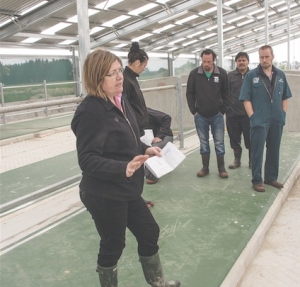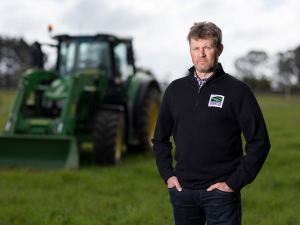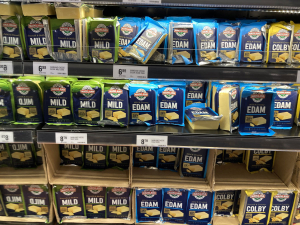The work is part of the Pastoral 21 research programme at the No.4 Dairy unit by scientists from Massey, AgResearch and DairyNZ.
Pastoral 21 is the work of DairyNZ, Fonterra, Dairy Companies Association of New Zealand, Beef + Lamb NZ and the Ministry of Business, Innovation and Employment. It aims to show how to profitably increase pastoral production while reducing farms’ environmental footprint.
Professor Mike Hedley leads the research at Massey. He discussed the work at a recent meeting at the unit’s newly built freestall barn. He talked about how the common practice of standing cows off pasture to reduce winter treading damage to pastures during wet soil conditions can also reduce losses of nutrients in surface runoff and drainage. Loss of nitrogen to water is reduced if a paddock’s urine patch load can be transferred to the standoff facility, such as a freestall barn, at critical times of the year.
The facility’s new $1.4 million freestall barn has feeding and resting areas for 200-300 cows. “It is a significant undertaking for any farm and our work will explore how to manage the system to benefit production and the environment,” Hedley says.
Stu Walsh and Steven Shaw, herd managers at the Massey No 4 farm, will use the freestall barn to house cows when they would do treading damage to winter wet soils and also house cows to reduce the summer- autumn urine load in the paddock.
Soil Scientists Dr Dave Horne and James Hanly studied the Manawatu weather and soils and found soils may be prone to severe treading damage for as long as 11 days at one time.
Dr Jean Margerison (dairy systems) researched different bedding systems for freestall barns. The unit’s newly built freestall barn will contain four different bedding systems capable of housing cows comfortably for long periods. The barn will be ready for the research programme in November.
Almost everything will be measured to help establish the best, most cost-effective system. This includes how the cows behave and adapt to being housed from the moment they are introduced to the barn. The comfort and effectiveness of cow mattresses – sand, rubber and foam – in the individual stalls will be assessed as will the barn cleaning systems.
The farm-scale trial builds on the findings of Christine Christensen, a PhD student, who refined the practice of “duration controlled grazing”. This allows cows to eat their normal grass diet and to be housed while they ruminate, rest and eat supplement.
A well-fed, highly productive cow spends about 11 hours a day lying and ruminating as it turns grass into milk. Much of that lying can be in a house where urine and dung can be collected and re-applied uniformly as slurry to pasture. Low rates of uniformly applied slurry cause no increase in nitrogen loss through drainage water.
The production from 200 cows that will be housed part-time in the barn will be compared with another herd of 200 representing more typical management in the lower North Island: 40% of the herd grazed off in winter and a feed pad to accommodate cows on wet winter and spring days.
A ‘reference group’ of local farmers has been asked to contribute their experience to help develop management rules for both farming systems.
At the recent farm reference group meeting Dave Horne and James Hanly discussed appropriate effluent management systems for the housed cows.
The team emphasises that the effluent system must be customised for each farm. Key factors important to deciding which effluent-land application systems are appropriate include the type of standoff facility, the barn or house for the cows and how long the cows may be housed.
These factors influence the volume and consistency of the effluent.
An understanding of the soils and climate of the region is also important in deciding what storage and labour the system will require. There are several systems to consider, including whole-effluent storage or solids separation and sprinkler, rotating irrigator or manure wagon application.









